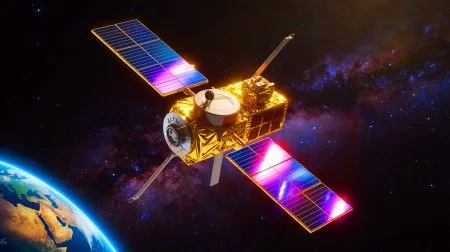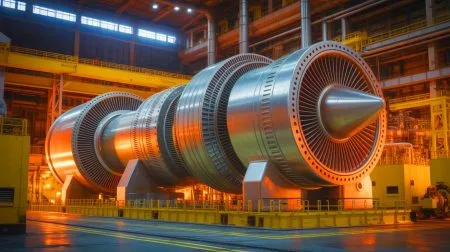| IN A NUTSHELL |
|
Recent breakthroughs in fuel cell technology are paving the way for a new era in aviation. Researchers from MIT have developed an innovative sodium-air fuel cell with an energy density significantly higher than traditional lithium-ion batteries. This advancement could power aircraft for short-haul flights, offering a glimpse into a future where air travel is more sustainable and efficient. As we delve into the specifics of this technology, it becomes clear that the implications for the aviation industry and environmental sustainability are profound.
Revolutionary Sodium-Air Fuel Cells
The cutting-edge sodium-air fuel cell technology, developed by a team led by Yet-Ming Chiang, uses a unique design featuring two chambers. One chamber contains liquid metallic sodium, while the other is filled with humid air, separated by a solid ceramic electrolyte. As sodium ions cross this barrier, they react with oxygen in the second chamber, which also includes a porous electrode, producing electricity.
This process not only generates power but also creates sodium oxide as a byproduct. Remarkably, sodium oxide can absorb atmospheric carbon dioxide emitted by conventional aircraft, eventually transforming into sodium bicarbonate. When released into the oceans, this compound helps mitigate ocean acidity, showcasing the dual environmental benefits of this technology.
With an energy density of approximately 1,000 watts per kilogram, these sodium-air fuel cells can be stacked to power aircraft on regional or national routes, covering distances of up to 930 miles. A noteworthy feature of this technology is its rapid “rechargeability.” After each flight, the cells can be swiftly replenished by replacing depleted cartridges with new ones filled with liquid metallic sodium.
Abundant and Accessible Materials
The production of metallic sodium, a key component of these fuel cells, is both feasible and cost-effective. As outlined in the study published in the journal Joule, sodium is derived by heating sodium chloride (common table salt) to just 208°F. Given the abundance and low cost of sodium chloride, scaling up the production of metallic sodium should not present significant challenges.
The research team, through their startup Propel Aero, is currently developing a fuel cell the size of a brick, with the potential to power large drones. This product is expected to hit the market within a year, signaling a significant step forward in the practical application of this technology.
Recently, an Australian company unveiled an aerodynamic skin promising to drastically reduce fuel consumption in both civilian and military aircraft, highlighting a broader trend towards innovative solutions in aviation technology.
The Potential Impact on Aviation
As the aviation industry grapples with the challenge of reducing its carbon footprint, the introduction of sodium-air fuel cells could be a game-changer. The potential to power aircraft on short-haul routes with a cleaner energy source aligns with global efforts to transition to more sustainable energy solutions. This technology not only promises to cut down emissions but also offers a practical approach to managing environmental pollutants.
Moreover, the ability to quickly replace sodium fuel cartridges between flights addresses a key limitation of other battery technologies: long recharge times. This characteristic makes sodium-air fuel cells particularly appealing for commercial aviation, where turnaround times are crucial for operational efficiency.
The environmental benefits extend beyond carbon emission reductions. The transformation of sodium oxide into sodium bicarbonate, which then helps reduce ocean acidity, signifies a holistic approach to environmental stewardship. Such innovations could redefine the industry’s role in combating climate change.
Future Prospects and Challenges
While the promise of sodium-air fuel cells is undeniable, several challenges remain. Scaling the technology for widespread use in commercial aviation will require significant investment and collaboration across the industry. Regulatory hurdles, safety protocols, and infrastructure development are areas that will need careful consideration as this technology advances.
Furthermore, the integration of these fuel cells into existing aircraft designs will require modifications and rigorous testing to ensure safety and reliability. Despite these challenges, the potential benefits make it an exciting area of research and development.
As the aviation industry continues to evolve, the question remains: how quickly can these technological advancements be integrated into our daily lives to create a more sustainable future for air travel?
Did you like it? 4.6/5 (21)






Wow, if these sodium-air fuel cells really work, flying could become so much more eco-friendly! ✈️
How soon can we expect these fuel cells to be used in commercial flights?
Sounds promising, but how safe is it to handle liquid metallic sodium in aviation?
Finally, a breakthrough that could actually reduce environmental impact! 🌍
Will this technology be too expensive for airlines to adopt quickly?
I hope this isn’t just another overhyped “breakthrough” that never takes off.
Why haven’t we heard more about sodium-air fuel cells before now?
What are the potential downsides of using sodium-air fuel cells?
This is amazing news! Thank you, MIT researchers! 🙌
Great, now we just need flying cars powered by these cells! 🚗✈️
Can these fuel cells be used in other industries besides aviation?
Is there a risk of sodium-air fuel cells exploding under certain conditions?
It’s fascinating how sodium oxide can help reduce ocean acidity. 🌊
Are there any airlines already testing this technology?
Wouldn’t it be difficult to mass-produce metallic sodium safely?
Seems like a lot of “ifs” and “buts” before this becomes mainstream.
Could sodium-air fuel cells be a solution for electric cars too?
What about the environmental impact of producing metallic sodium?
I’m just waiting for the day I can fly across continents without guilt. 😇
How does the energy density of sodium-air cells compare to that of jet fuel?
This could be a game-changer for regional flights! 🛫
Will airports need to change their infrastructure to accommodate these new fuel cells?
Love the idea, but how long until we see real-world applications?
Does this mean ticket prices might go down if energy costs decrease?
Is there any risk of sodium-air fuel cells contaminating the environment?
How does this tech compare to hydrogen fuel cells?
Hoping this isn’t just another pie-in-the-sky idea that never materializes. 🥧🌌
Why is it always MIT coming up with these groundbreaking ideas?
Can sodium-air fuel cells be recycled after they’re used?
Great article! This kind of innovation is exactly what we need. 👍
How big are these fuel cells? Would they fit into existing aircraft designs?
I’ve got my fingers crossed for a cleaner aviation future! 🤞
What do pilots think about the switch to sodium-air fuel cells?